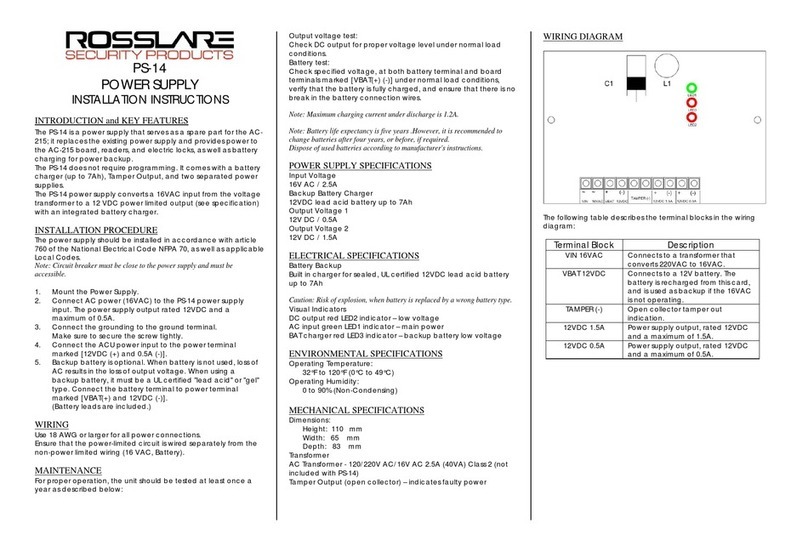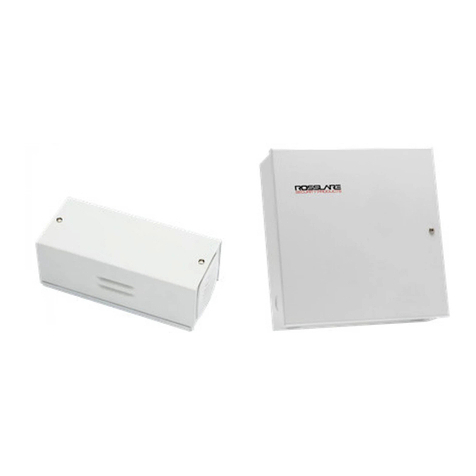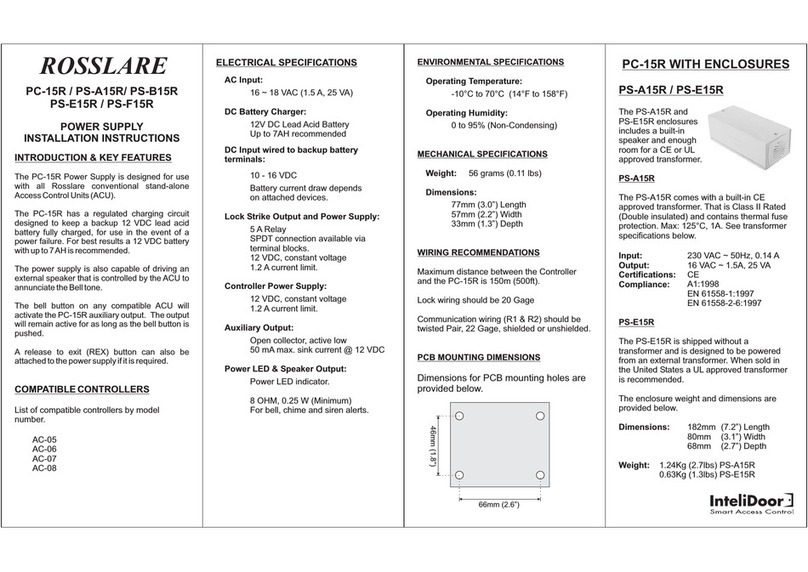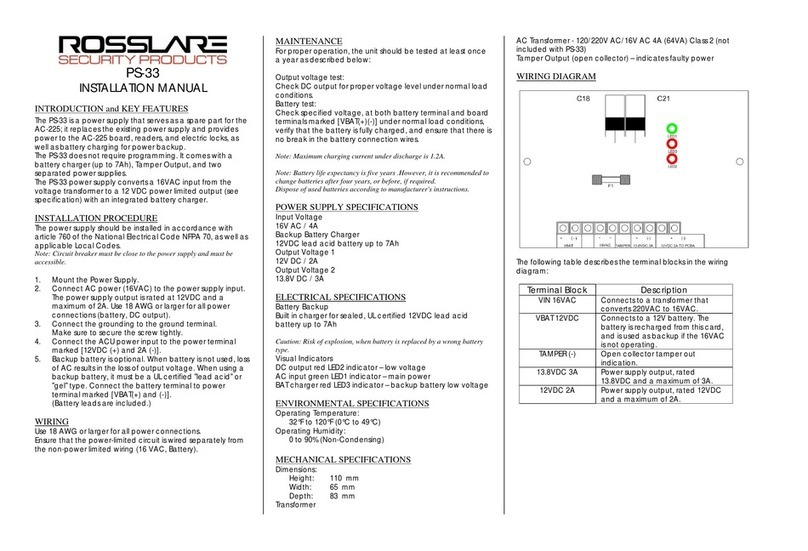
PS-C18
Power Supply
Installation Manual
1
1. Introduction
The PS-C18 power supply consists of a transformer and a PCP-18
PCBA.
230 VAC, 50 Hz power is input to the transformer and is converted to
24 VAC. The 24 VAC power goes from the transformer to the PC-P18
PCBA.
If there is no 230 VAC, 50 Hz input power, the battery backup can
provide 12 VDC input directly to the PC-P18 PCBA.
The PC-P18 PCBA outputs 13.8 VDC @ 5 A for use by another device.
In addition, a LED signal is output to indicate that the output 13.8 VDC
is normal and ready for the other device.
The total current of the power supply is limited to 5A.
Figure 1: PS-C18
2. Technical Specifications
2.1
Electrical Characteristics
Input Input to transformer: 230 VAC, 50Hz
Converted input from transformer: 24 VAC
Output 13.8 VDC 5 A
Battery Backup 12 VDC
Built-in charger for sealed UL certified battery lead
acid or gel up to 7 AH.
Maximum charge current 1.2 A
Automatic switch over to stand-by battery when
AC fails
Caution: Risk of explosion, when battery
is replaced by a wrong battery
type
Visual indicator DC output LED indicator on PCB indicates that the
output 13.8 VDC is normal and ready for the other
device
Additional Features Short circuit and thermal overload protection,
includes battery leads
2.2 5BEnvironmental Characteristics
Operating Temperature -10°C to 60°C (14°F to 140°F)
Operating Humidity 0 to 95% (non-condensing)
2.3 6BPhysical Characteristics
Weight 4.2 kg (9.26 lbs)
Dimensions (H x W x D) 225 x 230 x 76 mm
(8.85 x 9.05 x 0.30 in.)
3. Installation and Wiring
3.1
Installation
Install the power supply in accordance with article 760 of the National
Electric Code NFPA 72 as well as applicable local codes.
Circuit breaker must be close to the power supply and must be
1. Mount the power supply.
2. Connect the AC power (230 VAC, 50 Hz) to the marked terminals,
“Phase” to [L] and “Neutral” to [N]. Use 18 AWG or larger for all
power connections (battery, DC output).
3. Connect the grounding to the ground terminal. Make sure to
secure the screw tightly.
4. Connect the ACU power input to the power terminal marked
“VOUT + and (-)”.
5. [Optional] Connect the battery terminal to the power terminal
marked “+VBAT”.
When the battery is not used, loss of AC results in the loss of
output voltage. When using a backup battery, it must be a UL
certified "lead acid" or "gel" type. (battery leads are included)
3.2 8BWiring
Wire the unit according to Figure 2.
Figure 2: Wiring
Use 18 AWG or larger for all power connections.
Ensure that the power-limited circuit is wired separately from the non-
power limited wiring (120/230 VAC, battery.)
























